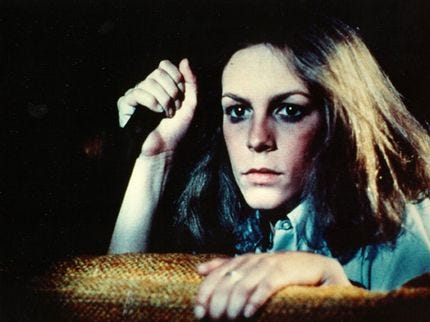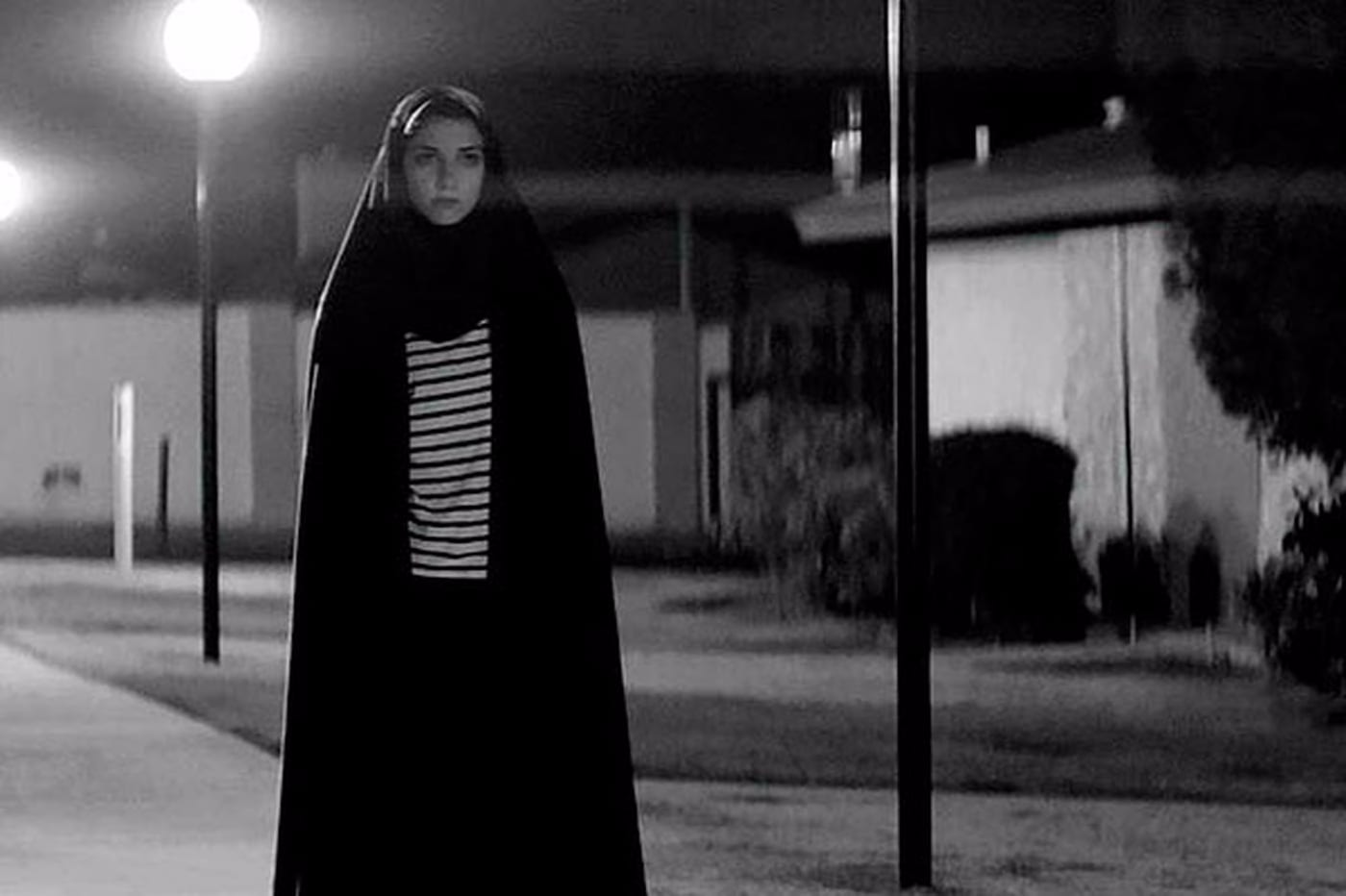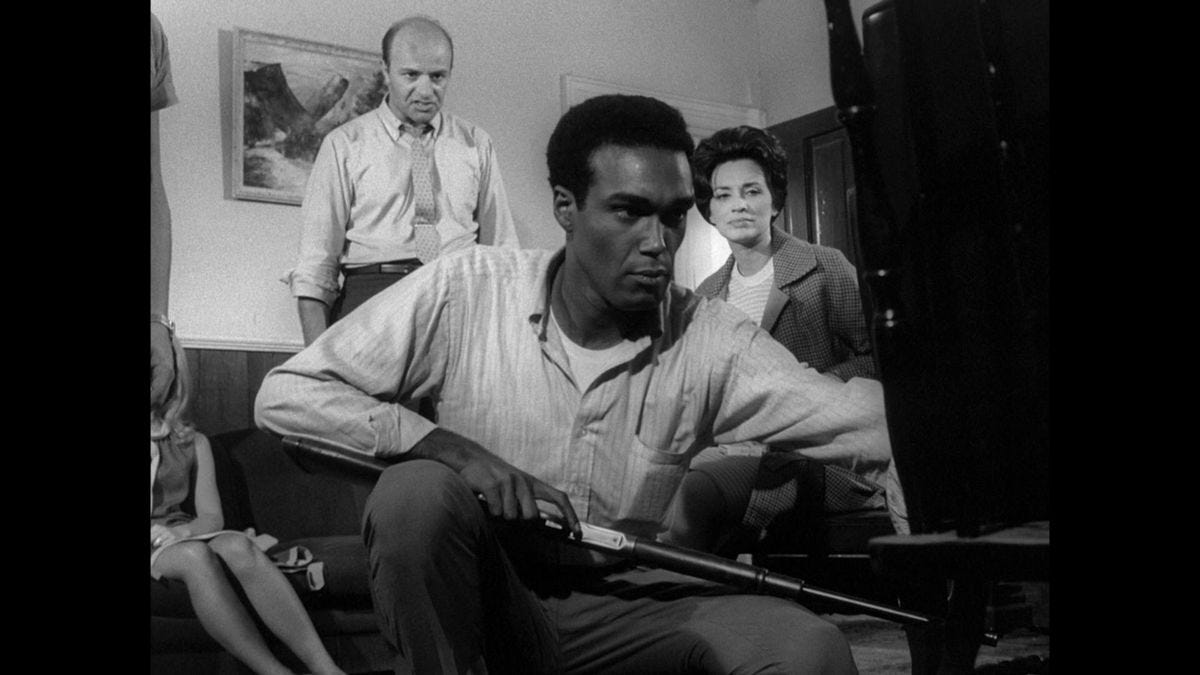Interviews with Interesting People 001: Jennifer Moorman
Final Girls, Fighting Back and the Problem with Exorcisms

Pop Culture Spirit Wow: Interviews!
Hi and welcome to this special Pop Culture Spirit Wow experimental spinoff.
I love interviewing people. In fact it may be my favorite part of working as a journalist. I don’t know if it’s because I love learning new things or that I love to be surprised, but when you have a good conversation with a complete stranger both things tend to happen and it’s a rare and special thing.
But then oftentimes all readers ever see of the conversation is a couple pull quotes. Take for instance the interview I did recently with Dr. Jennifer Moorman, professor of Communication and Media Studies at Fordham University, who completed her PhD at UCLA in Cinema and Media Studies and now teaches about notions of gender, sexuality and race in pop culture.
I had reached out to Jennifer for an article I’ve been working on about The Exorcist for America Magazine. And we ended up having this fantastic conversation about not just The Exorcist but representations of women in horror films more generally, and the way those representations have evolved.
Honestly, when the conversation was over my feeling was, I need to get on a plane and go to New York and get into one of Jennifer’s classes right now.
But where does that leave you, dear reader? Out in the cold. And we cannot have that! So, with Jennifer’s gracious permission and edited for clarity, I have the pleasure of presenting our conversation below.
I’m hoping to try this interview idea a couple times, and see if it’s something people like. But if interviews aren’t your thing, have no fear, the normal episode will drop on Sunday as usual. And as always, you can email me at jptmcd@gmail.com or tweet at me @popculturpriest if you have thoughts or feelings.
[Two notes about this conversation: Because part of our original interview will be published in my upcoming article about The Exorcist, that portion can’t be included here. But we do talk about The Exorcist toward the end, and about the subgenre of Catholic exorcism films more generally. And I’ll let you know when my piece drops.
Also, in talking about The Exorcist and Catholic horror movies, Jennifer mentions the Jesuits. They are a group of Catholic priests who often work in schools and preach about social justice (of which I am one; hi!) . The writer of The Exorcist William Peter Blatty was taught by Jesuits, and the priests in The Exorcist are members of that group.]
Okay, here we go. Enjoy! And thank you Jennifer!

How did you get interested in horror as a genre and topic of study?
That’s hard to say. I did start watching it when I was pretty young, I remember watching some horror movies with my dad when I was younger than Regan I’d say. So I think it was in my consciousness.
But a colleague [Ben Sher] and I have ideas about how horror is a great way of working through trauma. If you’re a member of a marginalized group, it can go one of two ways [with horror films]: either you can’t deal with it at all or you find it cathartic.
Cathartic how? I tend to think of horror as about marginalized groups – especially women – being victimized?
Traditionally yes, but I would argue that starting in the 1960s more and more horror actually focuses on people from marginalized groups who end up being the heroes. They’re targeted but they survive.
To me that reflects the reality—you are being targeted, and yet you survive.

From the title of the movie A Girl Walks Home at Night (2014) [above], you think it’s about a woman getting victimized, but it’s about a female vampire attacking men. If you’re a woman in this country, you’ve been told you can’t walk around at night, you have to watch out for men who are going to take your virginity and try to hurt you, and that it’s your job to defend against that rather than society’s to teach boys not to do that.
Horror is a way where you can see those threats being manifested and you see the person who survives it. We actually see women in empowering roles, and that’s a cathartic thrill.
I also think horror manages to deal with social issues in a backdoor sort of way; it’s not necessarily why people show up for horror movies or what they expect, but it’s one of the most socially critical genres. It’s hard to name another genre that features women as the protagonists more often – unless you’re talking about romantic comedies, and [laughing] I would argue that horror has better things to say about women.
How would you describe the evolution in the representation of women in horror films over the decades?
I hesitate to generalize too much because there are always exceptions, but my take is that in the early years of the genre, the classic Universal monster movies up through most of the 60s, women are pretty much always the victims needing to be rescued. You do have women here and there as kind of co-protagonists; but even if you have a plucky heroine, in the end a man always swoops in to save the day.
There are some exceptions, some films that do a something a little interesting with that like Cat People (1942), but by and large they’re fairly conservative is how I’d describe it.
But starting in the 60s, you start to see women in more prominent roles. My take on it, and it relates to my research, which is on adult films, is that this is coming out of exploitation films, where you see a lot more women in more conventionally masculine roles. And it’s partially an excuse to have more women onscreen who will probably take their clothes off eventually. But they are given much bigger roles than in conventional cinema.
When exploitation and horror films start to merge after changes to the Production Code in the 1960s, that change starts to bleed into the mainstream horror genre. Even in films like Texas Chainsaw Massacre (1974) [pictured below], which I think has a reputation for being kind of nasty and misogynist, we do have this woman who survives. She is tortured throughout the film, but she survives.

And I think that film lays the groundwork; a lot of films that follow take on that model of a woman who survives and gets stronger and stronger. Friday the 13th (1980) and its sequels you find female protagonists, the “final girl” if you will, who are stronger and more masculine in various ways and who actually defeat the killer. They don’t just happen to survive, they fight and overcome.
So I see a trajectory in the 1960s and especially the 70s where you start to see women as survivors in a meaningful way. They’re still very much victims, it’s not as if these films are just feminist, they’re still focused on women’s bodies and the violence is sexualized, which is really problematic. But at least one woman overcomes that.
And it just fits; it reflects the reality of living in a patriarchal society where you are sexualized and women are often subjected to sexual violence, and you persevere, you fight for a better world where those sorts of things aren’t happening. The monster [in these films] can represent patriarchy in a way. When you see a woman beheading the monster it’s like she’s taking down the patriarchy.
How do you feel about exorcism films?
I don’t know that I can generalize, but it’s my least favorite subgenre.
Really? Why?
I think they tend to be much more conservative in the values that they’re promoting and less concerned with social justice. I can see how they could be meaningful in a kind of faith-based context, but to my mind they really tend to either individualize or abstract the conflicts. In a film like Texas Chainsaw, it’s about these former farm workers who have lost their jobs and start killing and eating people. It’s seen as this trashy exploitative film, but it’s pretty easy to read it as engaging with social issues, looking at capitalism and the collateral damage from industrialization, and it’s a nightmare vision of the consumers themselves being consumed. It’s engaging with all these larger issues.

Same with Night of the Living Dead (1968) [above]. Night of the Living Dead is a case of a film that really surprised audiences by having a black male protagonist. It’s almost impossible to read that film as anything other than socially critical, engaging the Vietnam War, police brutality, fear of authoritarian governments and so on. It’s hard to miss these larger references.
But a film like The Exorcist (1973) is about individual struggles. There’s obviously this much larger evil, but it’s fundamentally about the struggle to save their souls. It’s hard to map that onto social justice in any way.
And if we’re talking The Exorcist specifically, I think it’s no accident that the film Chris is working on is about student protests, and her character gets on stage and tells the students to stop protesting and work within the system. I can’t imagine a less radical message.
That to me is what makes them less interesting. They tend to be much more individualized in terms of the conflict; it’s a personal struggle. Obviously, personal struggles are important, but what attracts me to the genre is the way it intersects with social justice concerns.
I do think that would be possible within the contest of the struggle of one’s soul; in The Exorcist we get references to injustice, like Father Karras’ mother’s neighborhood versus the Georgetown neighborhood where Chris and Regan live, but it doesn’t go anywhere. Ultimately it’s just him struggling with his loss of faith. It seems to be about Regan and Chris but it’s really about Father Karras [below].

It’s interesting to hear you say that about whose story this is. In the novel the first half is mostly Chris’ story. Then suddenly everything shifts to Karras. We stop getting Chris’ point of view entirely.
Can you imagine a scenario where the story could have been about Chris saving Regan instead?
Yes and no. The person who wrote the book clearly had something specific in mind that had to end with this particular priest struggling with his own inner demon, as it were, and having to be the one who sacrifices himself and saves the day.
But if someone else had written it, I could have imagined at the halfway point instead of Karras coming in and taking over, it could have gone somewhere in between: maybe Karras comes in and helps her to save her daughter; that would have been different.
Or possibly if it didn’t have to be about his crisis of faith ultimately, Chris could have found a way to save her daughter herself. There are definitely other films, like The Babadook (2014), where the mother is the one who saves the child. Or The Conjuring (2013), that’s a case where you have these sort of religious figures coming in and protecting a family, and a woman plays an integral role, she is endowed with the same authority as the man is to cleanse the homes of these demons.
But it’s hard to imagine that in the Catholic universe of this film; it had to be a priest and there aren’t women priests.

Would you say Catholic exorcism films are unavoidably patriarchal, then?
My impression is that yes, they do tend to be inevitably patriarchal and kind of conventional. But I don’t think they have to be. For instance, I find the Jesuit mission in the Church to be very appealing and social justice-oriented. But then that’s so absent from The Exorcist. You see Karras approached by a homeless person on the subway and he just ignores them, he walks away. And his mother is in this poor neighborhood, but the emphasis is on how he’s failed because he’s a priest instead of making money as a psychiatrist [to better support her].
So I don’t think a horror film has to be either social justice or faith-based in focus. You just need someone who would integrate them. I think Carrie kind of does this, actually, but in a way that’s not favorable to the Church.
I do think whenever you have God versus the Devil as the basic structure of horror movies, they tend not to look at social forces. It becomes only theological forces that are at issue.
And with the imperatives of Hollywood, risk-averse studios look for formulas that work. The Exorcist was so successful that every film that’s come after it of a similar type is going to follow its lead, and I think that’s what’s happened.
But genres do evolve. That comes from filmmakers taking risks. Who knows, maybe it’s already happened and I’m just not aware of it.


